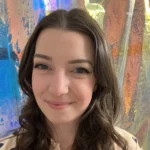Originally published in TEACH Magazine, May/June 2021 Issue
By Kelsey McCallum
The world of education is always looking for new and innovative ideas. Often countries that rank near the top of international education assessments—countries like Finland—are looked to for inspiration. From shorter school days and more frequent breaks, to an increased amount of teacher autonomy and lack of standardized testing, the Finnish educational system has many different strategies to offer.
In 2018, Dr. Russell Booker, who was Superintendent of Spartanburg County School District 7 at the time, toured the Scandinavian country on a trip organized by the Riley Institute at Furman University. Few North American educators are able to see first-hand what a typical school day in Finland looks like, but Dr. Booker was lucky enough to experience that for himself. He visited schools around Finland with a group of South Carolina educators, legislators, and non-profit leaders who were seeking inspiration on how to promote teacher retention and student academic achievement.
Kelsey McCallum is an Associate Editor for TEACH Mag. She holds a BSc from the University of Guelph and a Graduate Certificate from Centennial College. She currently lives in Toronto, ON, with her partner and their cat, Banksy.


